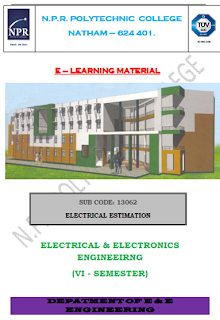Ship Technology Rules for Classification and Construction (Electrical Installations) DOWNLOAD : http://www.gl-group.com/infoServices/rules/pdfs/gl_i-1-3_e.pdf ...
Thursday, March 13, 2014
Wednesday, March 12, 2014
Electrical Thumb Rules
Electrical Engineering Thumb Rules
Earthing Resistance: Earthing Resistance for Single Pit=5Ω ,Earthing Grid=0.5Ω As per NEC 1985 Earthing Resistance should be <5Ω. Voltage between Neutral and Earth <=2 Volts Resistance between Neutral and Earth <=1Ω Creepage Distance=18 to 22mm/KV (Moderate Polluted Air) or Creepage Distance=25 to 33mm/KV (Highly Polluted Air) Minimum Bending...
Tuesday, March 11, 2014
Choice of a circuit-breaker
Low Voltage Circuit Breakers
Based on IEC 60947-2 (LV switchgear and controlgear - Part 2: Circuit breakers): In (Rated current) The rated continuous / uninterrupted current that the circuit breaker can carry. Icm (Rated short-circuit making current) The short-circuit current that the circuit breaker can withstand as it is closing where the act of closing initiates the...
Subscribe to:
Posts (Atom)








